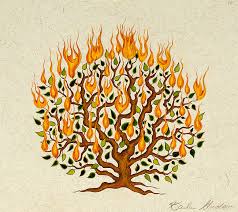Pesach in a Time of Crisis
Rabbi Ira F. Stone
Part I
This is not going to be a how-to guide. Already there are various sites providing advice on how to scale down your Seder this year in light of the Corona virus; various suggestions for live-streaming with your families. Rather, I’d like to provide a few brief thoughts on selected moments in the Haggadah. Often, in the excitement of our family Sedarim, with kids running around and food on the stove, we are apt to pay a little less attention to the exquisite job of weaving this text together, to skip over parts that seem to carry less emotional weight than others or do not lend themselves to thoughtful meditation amid the hubbub.
In the coming few weeks before Pesach, regardless of how we are each going to figure out our ways of celebrating it, I propose to offer these thoughts by way of preparation and as possible additions to whatever seder discussions we end up being able to put together. I’m not sure out the outset how many there will be, but several, at least.
I want to begin with what many people hardly consider to be part of the Haggadah. That is the enumeration of the order of the Seder usually printed before the Seder itself begins:
Kadesh – Sanctification of the day over a cup of wine
Urchatz – Ritual hand washing
Karpas — Dipping the parsley
Yachatz– Breaking and hiding the middle matzah
Maggid — Asking the questions and telling the story
Rachatz – Washing before eating
Motzei – Blessing of the “bread”
Matzah – Blessing before the mitzvah of eating Matzah
Maror – Eating the bitter herb
Korech – Combining the bitter herb, matzah and harozet to emulate the Paschal sacrifice
Shulchan Orech – Eating the festive meal
Zafon – Concluding the meal by eating the Afikomen
Barech – Grace after meals
Hallel – Psalms of praise
Nirzah – Concluding declaration
Often this enumeration is sung to a traditional melody, other times it is simply recited. While it may not be part of the statutory Seder, its addition to the tradition is not without importance. It reminds us that the liturgy we are about to participate in is choreographed with the same precision as that of the Priests in the time of the Temple and that by participating with the same intentional energy (kavannah) we take on the role of the priesthood in assuring the continuity of the Jewish People.
However, beyond this theological reasoning, it also reminds us that orderliness is one of the key goals of Jewish religious life. Moreover, this imperative, already evidenced in the precise order with which the Torah begins, allows us to participate in the act of re-creation regardless of the particular traumas of the time we are living in and through. The Seder ritual is an act of re-creation par excellence.
In the absence of a Temple the Rabbis devised a ritual that would allow the people to nonetheless imagine the possibility that the broken world they found themselves in could be put back together. Jews have had recourse to this ritual to express that possibility in many situations over the course of history, including those who endeavored to engage in Sedarim even in concentration camps.
In a time of crisis, as we find ourselves this year, the greatest danger is the danger of despair. The Seder is the ultimate antidote to despair and building the Seder out of these very orderly steps is the beginning of constructing hope. May we keep this intention in mind as we chant the opening order of the Seder wherever and however we find ourselves this year.


